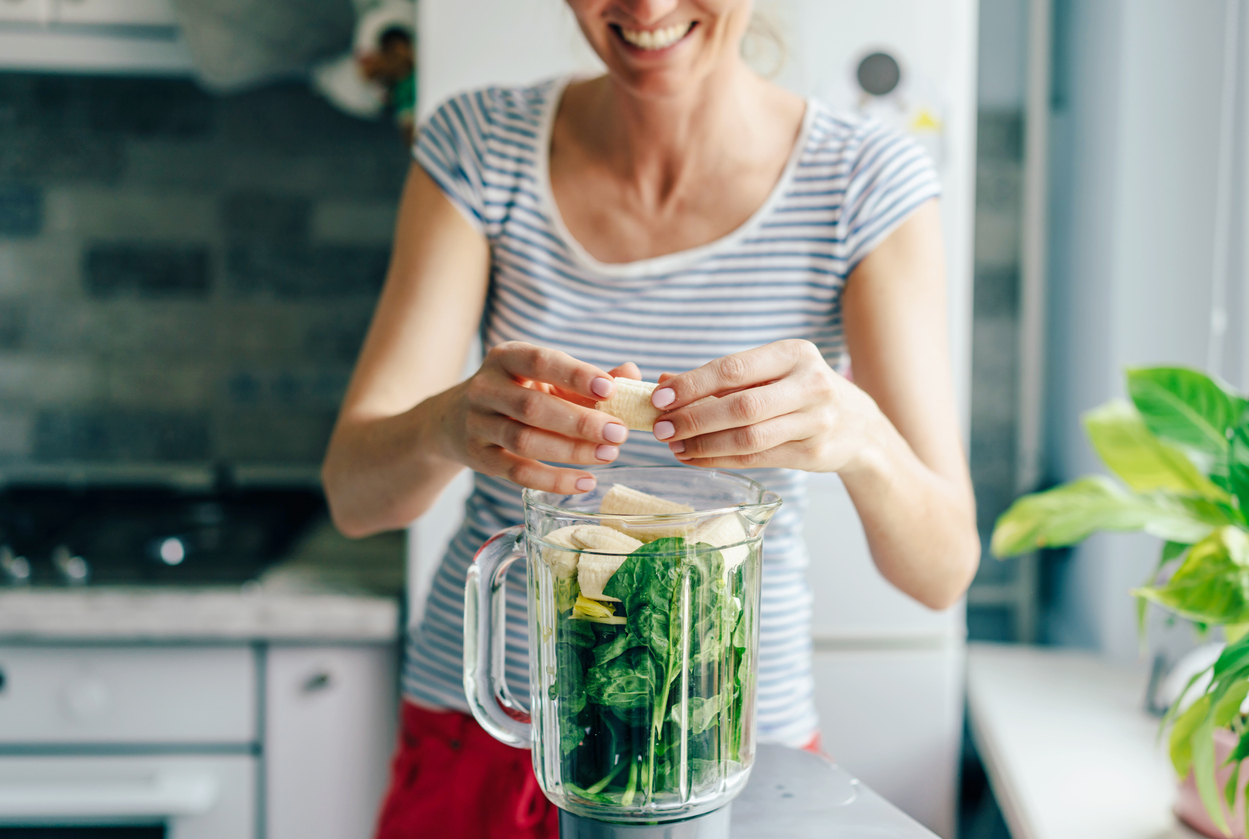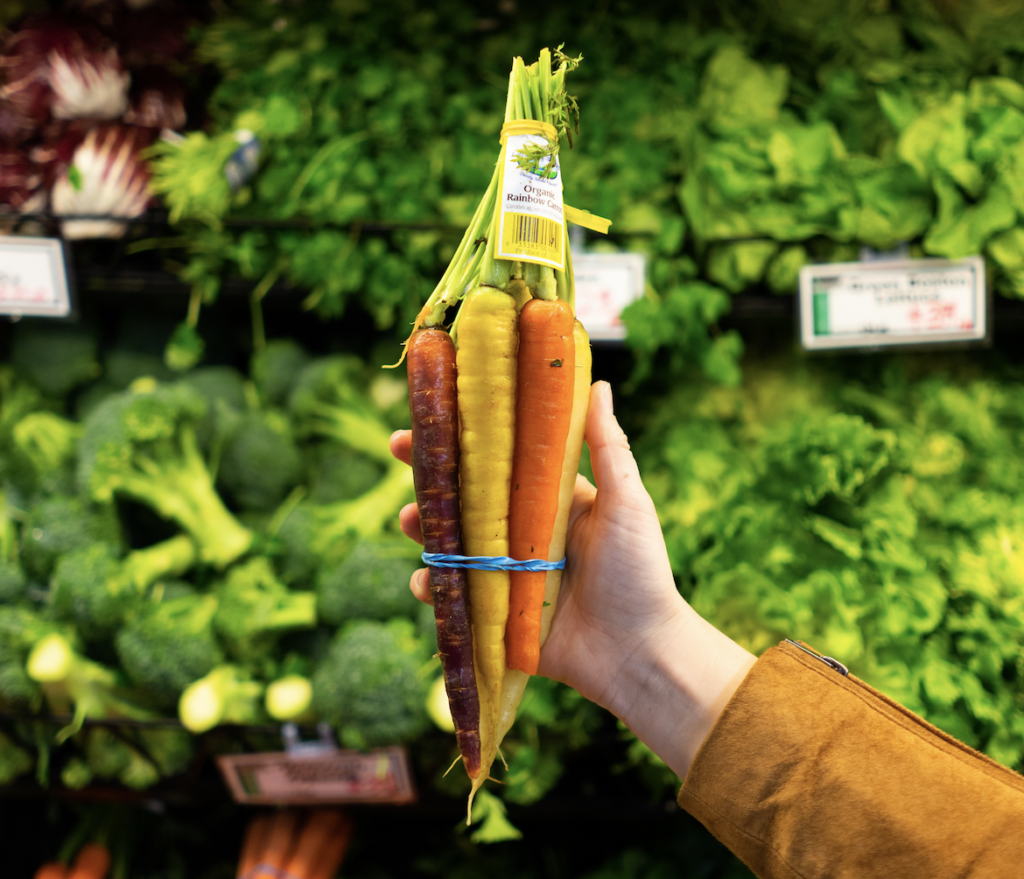EATING WHOLESOME DELICIOUS FOOD DOESN’T HAVE TO BE EXPENSIVE
1.8.21
You want to eat healthier, but everywhere you turn all you hear is, “eating healthy is expensive!” Believe it or not, you can eat healthy on a budget and it’s easier than you think! Everyone’s eating habits and food favorites are different, so the following steps are great ways to inspire strategic budget-friendly picks for a kitchen full of wholesome deliciousness. If you’re willing to sharpen your shopping strategy, do a little kitchen prep, and get creative with cooking, you can save a bundle.
SHOP THE PERIMETER
The first and quickest tip to shop efficiently, healthily, and on a budget is to shop the grocery store’s perimeters. All of the freshest items are typically outside of the aisles which are the budget friendly favorites. When you’re looking to indulge and splurge, dive into those aisles for the unique and trendy snacks.
BUY REAL FOOD IN WHOLE FORM
Some foods are way cheaper in a less processed form. For example, a block of cheese is cheaper than shredded cheese and canned beans are cheaper than refried ones. Whole grains, like brown rice and oats, are also cheaper per serving than most processed cereals. These less processed foods are also often sold in larger quantities and yield more servings per package.
BUY IN BULK
Buying some foods in bulk quantities can save you a lot of money. Grains, such as brown rice, millet, barley, oats, and so much more are often available in bulk. These are all staple foods that are relatively inexpensive and can be used in a variety of healthy meals; they also keep for a long time if you store them in airtight containers!
WHAT’S IN SEASON?
Local produce that’s in season is generally cheaper and at its peak in both nutrients and flavor. Produce that isn’t in its season has often been transported in, which isn’t ideal for either the environment or your budget. And if you ever run into the issue where you’ve bought more than you need, you can always freeze the rest or incorporate it into next week’s meal plans.
BUY FROZEN
Fresh fruits, berries, and vegetables are usually in season only a few months per year and are rather expensive out of season. Quick-frozen produce is usually just as nutritious, it’s cheaper, available all year, and is usually sold in large bags. Frozen produce is great to use when cooking, making smoothies, or as toppings for oatmeal or yogurt. Better yet, you gain the advantage of being able to take out only what you need at a time.
MEAT AND OTHER PROTEIN
Don’t sacrifice your organic, pasture-raised, and grass-fed products, simply eat more of a plant-centric diet. We know high-quality meat can increase your checkout total, so lessening your meat intake and eating lower on the food chain will help your budget and your overall health and wellness (as well as the planets’!). You really only need four ounces of animal protein at a time—which is about the size of your fist—and there are so many plant-based sources of protein.
Where can you find different proteins? A complete protein, or whole protein, is a food source of protein that contains an adequate proportion of each of the nine essential amino acids necessary in the human diet. Beef, fish, dairy, and eggs contain enough of each of these, but here are plant-based options that are also a complete protein: Quinoa, tofu, tempeh, edamame, amaranth, buckwheat, Ezekiel bread, spirulina, hemp seeds, chia seeds, nutritional yeast, rice and beans…and so much more!
SHOP SMART TO FILL YOUR CART
Before making a grocery list, write down meals you want to make this week. Buying for the week means you’ll make fewer shopping trips and buy only the items you need.
Here are six basic tips for creating and planning your menu and grocery list:
- What do you already have? Look in your freezer, cabinets, and refrigerator. Make a note of what you currently have on hand. You can save money by using these items in the upcoming week’s meals and avoid purchasing something you already have on hand.
- What does your week look like? Think about your week ahead. What days do you need something quick and easy to make? What days do you have a little more time to experiment with new recipes in the kitchen? Choose meals you can easily prepare when you don’t have a lot of time. Save recipes that take longer for days off. You also can prepare meals in advance to heat and serve on your busiest days (say yes to leftovers!).
- Are there recipes you want to try? Find new ideas for healthy and low-cost meals based on what you have on hand, foods your family enjoys, and foods that are good buys. You might discover a new favorite!
- Need food inspiration? Find inclusive recipes by Dr. Axe here. There are delicious recipes that are quick and easy, as well as wonderful meals to try something new!
- Got leftovers? Think about larger recipes with enough servings for multiple meals. This can reduce the number of ingredients you need to buy, and save you time preparing another meal.
- Pack it! Packing your lunch, snacks, drinks and other meals are less expensive and often much healthier than eating out. If you have adapted to cooking large meals at home, then you’ll always have a steady lunch to bring with you without any additional effort or cost.
THE DIRTY DOZEN AND CLEAN 15™
Organic produce is always the best choice. However, when you’re looking at your grocery list budget, try to prioritize your food buying decisions using the following list to help stay within your budget and still get the healthiest groceries when organic may not be available or in the cards.
Sometimes organic and locally grown fruits and vegetables aren’t available, especially during the offseasons. When it comes to conventional produce, The Dirty Dozen™ is a trademarked term used to define the twelve crops that farmers typically use the most pesticides on, versus, The Clean 15™ which is also a trademarked term to describe the fifteen fruits and vegetables that have the lowest amount of pesticide residue.
The Dirty Dozen
Strawberries, Spinach, Kale, Nectarines, Apples, Grapes, Peaches, Cherries, Pears, Tomatoes, Celery, Potatoes, and Hot Peppers.
The Clean 15
Avocados, Sweet Corn*, Pineapple, Onions, Papayas*, Frozen Sweet Peas, Eggplant, Asparagus, Cauliflower, Cantaloupe, Broccoli, Mushrooms, Cabbage, Honeydew Melon, Kiwi.
*A small amount of sweet corn, papaya, and summer squash sold in the United States is produced from genetically modified seeds. Buy organic varieties of these crops if you want to avoid genetically modified produce.
AVOID THE SCARY SEVEN
About 80% of the “foods” on grocery shelves today didn’t exist 100 years ago, we’re designed to eat real food. The Scary Seven™ are fake ingredients that can be harmful and dangerous.
- High-Fructose Corn Syrup
Potential side effects include obesity, insulin resistance, increased belly fat, and heart disease.
- Trans Fats
Potential side effects include heart disease, cancer, and diabetes.
- Artificial Flavors
This blanket term refers to over 100 possible chemical additives. Potential side-effects are allergic and behavioral reactions.
- Monosodium Glutamate (MSG)
Potential side effects include chest pains, heart palpitations, headaches, and stimulating the taste buds which cause you to eat more.
- Artificial Colors
Potential side effects include allergies, sinus congestion, hyperactivity in children, worsens symptoms of ADD, and ADHD.
- Artificial Sweeteners
Aspartame (Equal, NutraSweet): Primarily affects the nervous system. The potential side effects include headaches, dizziness, memory loss, convulsions. Sucralose (Splenda) can decrease the good bacteria in the gut.
- Preservatives
Potential side effects include TBHQ (Tinnitus, Nausea, Vomiting), Polysorbates 60, 65, and 80 (Infertility, Immunosuppressant, Anaphylaxis), BHT/BHA (Liver and Kidney problems, BHA is a possible carcinogen), Sodium Benzoate (Allergic reactions, Carcinogen), Sulfites (Allergic reactions, especially for asthmatics).
TIME TO CHECKOUT
Planning your week ahead to grocery shop seems like a daunting task on top of an already busy, bustling lifestyle, but applying the right tools and practices that work for you will greatly impact your health and wellbeing (and your wallet’s!). You really can’t put a price on good health, but you don’t have to break the bank to eat well either.


